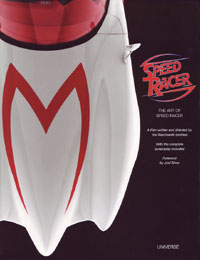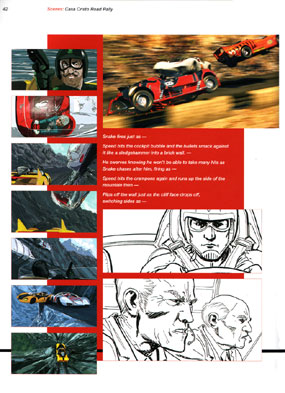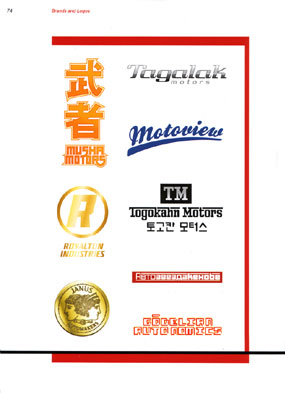|
|
Whatever you think of the box-office flop that was Speed
Racer, it cannot be denied that the film was stunning to look at. The
visuals were inventive, rich and were successful in creating a live-action
cartoon. For a film full of eye-candy then, an art book is essential into
providing an insight into its making. |
|
The Art Of Speed Racer opens with introductions
by VFX supervisors John Gaeta & Dan Glass, discussing the film and VFX
techniques in general. Both talk about techniques deployed to make
the film in general (Gaeta more so), most of which are explained in
simple terms as these are short introductions after all. They are
relatively interesting though and you do feel that both of them really
did enjoy working on the film, relishing the solving visual challenges
which it presented. |
|
|
|
|
|
Next the characters of the film are covered and again
this is disappointing. Although it is interesting to see the retro
fashions and the costumes of more minor characters, there are no
comments from the wardrobe supervisor(s) or comparison to the original
manga designs. Instead we get a brief description of each
character, which is pretty unnecessary if you have already seen the
film. |
|
this gallery at all though, so I guess we won't
know what did inspire them. Another disappointment.
A forward by producer Joel Silver is included, who talks about the dynamic of the original anime as well the manpower which went into creating the film. Hilariously he says 'of course, we couldn't fir every piece of art tacked on the walls of our production "war rooms" on these pages' Well no you can't Joel, because the majority of the book is taken up by the bloody script!! Ratings Product:
|









